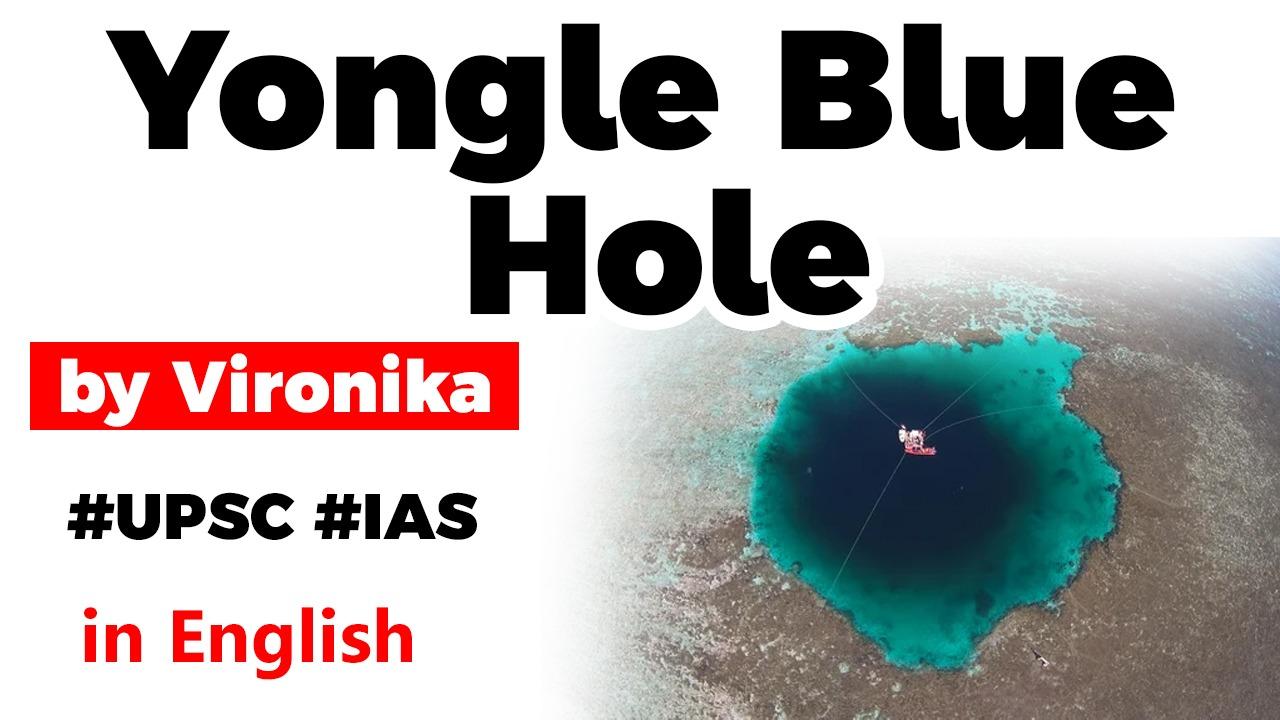Table of Contents
Yongle Blue Hole
- Carbon more than 8,000 years old has been found inside the world’s deepest blue hole — the Yongle Blue Hole (YBH).


- The deepest known marine cavern is the Yongle blue hole, which measures roughly 300 metres from top to bottom.
- Blue holes are marine caverns filled with water and are formed following dissolution of carbonate rocks, usually under the influence of global sea level rise or fall.
- YBH has a depth of 300 metres, far deeper than the previously recorded deepest blue hole, Dean’s Blue Hole in Bahamas, which had a depth of 202 metres.
- However, like most blue holes, it is anoxic
- Such anoxic ecosystems are considered a critical environmental
- Concentrations of carbon, usually found in deep marine holes like YBH, provide a natural laboratory to study carbon cycling

- Well-known examples can be found in South China Sea (Dragon Hole), Belize (Great Blue Hole), the Bahamas (Dean’s Blue Hole), Guam, Australia (in the Great Barrier Reef), and Egypt (in the Red Sea).
- Blue holes are distinguished from cenotes in that the latter are inland voids usually containing fresh groundwater rather than seawater.
- Blue holes are roughly circular, steep-walled depressions, and so named for the dramatic contrast between the dark blue, deep waters of their depths and the lighter blue of the shallows around them.
- Their water circulation is poor, and they are commonly anoxic below a certain depth; this environment is unfavorable for most sea life, but nonetheless can support large numbers of bacteria. The deep blue color is caused by the high transparency of water and bright white carbonate sand.
- Blue holes formed during past ice ages, when the sea level was as low as 100–120 metres (330–390 ft) lower than at present[5]. At those times, these formations were targets of the same erosion from rain and chemical weathering common in all limestone-rich terrains; this ended once they were submerged at the end of the ice age.
- Many different fossils have been discovered that indicate the type of life forms that existed in blue holes. Other life forms such as marine life and marine fossils have also been noticed; crocodile and tortoise fossils, for instance, have been found in blue holes.
- Exploring blue holes requires an extremely high level of expertise in the diving field, hence the fact that very few divers have ever attempted it. In 2009, however, a team of scientists set out to study seven of these blue holes in the Bahamas .
- Through over 150 dives, the scientists, led by Keith Tinker, investigated bacteria able to live in anoxic environments
Great Blue Hole
- This is a popular spot among recreational scuba divers who are lured by the opportunity to dive in sometimes crystal-clear water and meet several species of fish, including midnight parrotfish, Caribbean reef shark, and other juvenile fish species. Other species of sharks, such as the bull shark and hammerheads, have been reported there, but are not regularly sighted.
Dean’s Blue Hole
- Dean’s Blue Hole is a blue hole located in The Bahamas in a bay west of Clarence Town on Long Island and is the world’s second deepest, after the Dragon Hole in the South China Sea, with a depth of 202 meters (663 ft).
Latest Burning Issues | Free PDF






















 WhatsApp
WhatsApp